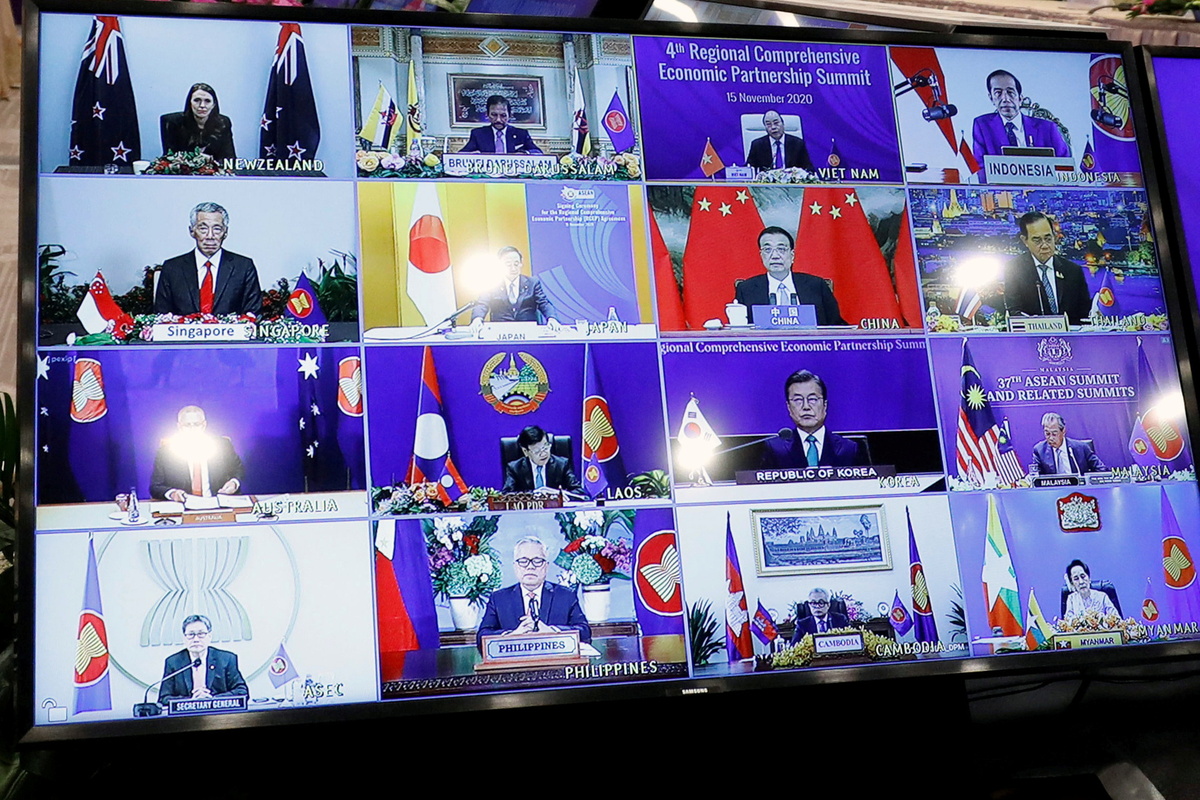ASEAN's strategies to address new normal


As policymakers prepare to intervene and industries consider changes to their business models, the COVID-19 pandemic and stimulus packages offer the Association of Southeast Asian Nations a once-in-a-generation opportunity that could work toward building a more sustainable future.
Amid the pandemic, the ASEAN economy is projected to contract 3.8 percent this year-the first economic contraction in 22 years. The initial and individual country responses to the pandemic have been two-pronged: The first is to tackle the health emergency and the second is to restore the economy.
During the 37th ASEAN Summit in November, leaders recognized the need for coordinated actions and promulgated the ASEAN Comprehensive Recovery Framework, which serves as a consolidated exit strategy for the region, given the scale of the socioeconomic impact.
The five strategic areas of the recovery framework are intended to address both the region's immediate needs during the reopening stage for a successful transition to the new normal, as well as medium-and long-term needs through the stages of COVID-19 recovery and for longer-term sustainability. The framework also aims to advance a more sustainable and resilient future.
The pandemic has put many ASEAN governments in a bind, having to choose between saving lives and protecting livelihoods. Since March, ASEAN member countries have announced several special economic recovery packages equaling 2 to 7 percent of the national GDPs. The measures include intervention for immediate relief, liquidity, and payment deferrals to low-income households and small businesses. These broader, economy-wide interventions to stop contraction and stimulate growth have come in phases. Despite the right intentions, implementing these measures is still not easy.
Financial aid to small and medium-sized enterprises is not effectively distributed because of challenges in identifying and targeting those in immediate need, including jobs for millions of migrant workers and those in informal sectors; disruption of supply chains through social distancing protocols; and cash flow for small businesses and unskilled workers.
But the ASEAN Comprehensive Recovery Framework and its implementation plan give an opportunity to shape the future in a manner that would deliver a new social contract among public organizations, the private sector and the people-one that rests on the pillar of commitment to creating jobs, accelerating economic growth and achieving environmental sustainability.
The pandemic and economic recovery must avoid the dangers and fragilities of the past. Because the region is among the most vulnerable in the world to climate change, the pandemic has compromised ASEAN's accumulated efforts to decarbonize its electricity sector, industries, and transportation networks. It has also put a temporary halt to investments in building sustainable smart cities.
ASEAN member states will need to consider more ambitious stimulus packages that can help revive local economies, restore decent jobs and build a low-carbon future for their citizens.
In this context, implementation of the recovery framework should consider the following three principles in guiding future initiatives and investments.
First, the right investments will need to be fast and labor-intensive in the short run, and have higher multiplier co-benefits in the long run. Investments with these characteristics include low-carbon infrastructure such as renewable energy assets, energy-efficient buildings, research and development in green technologies, rural support for climate-smart agriculture, education and skill development, natural capital investment to improve ecosystem resilience, and restoration of degraded forests.
Second, the forthcoming stimulus packages will also need supporting policies to maximize the benefits of the investments. Falling fossil fuel prices provide an opportunity for carbon pricing and prevalent subsidy reform, which can provide a source of much-needed revenue, and can be part of wider fiscal reforms to restore financial stability.
Third, it will be crucial to mobilize all pools of finance-public, private and international-and use them more effectively. This includes strengthening national development banks and making effective use of international climate finance, capitalizing bond markets and enhancing strategic partnership with the international financial community.
Recovery packages are set in a macro-fiscal context, where fiscal expansion is necessary but severely constrained in many ASEAN countries. Hence, it will be crucial to substantially augment the mobilization of private finance through trade and investment channels while aligning financial outlays with the Paris Climate Agreement and the United Nations' Sustainable Development Goals.
As the implementation of the ASEAN Comprehensive Recovery Framework unfolds, coordinated policy responses will require resolute leadership at the regional level, a willingness to experiment and change at the national level, and innovative public-private financing models at the local level.
The new social contract and greening of the recovery will be an economically prudent, bold choice for ASEAN to reduce damaging inequalities and bring back growth.
The author is a senior economist at the Economic Research Institute for ASEAN and East Asia. The views do not necessarily reflect those of China Daily.

































